

Viewpoints
Viewpoints is a blog in which different writers express their views and opinions on current topics. A new blog post is published about once every four weeks.
You can propose texts by e-mail to viestinta@kesko.fi. The maximum text length is 2,000 characters.
Christmas Kettle helps throughout the year
The Christmas Kettle collection may be the best-known image of the Salvation Army. Nearly everyone has seen such a kettle and many have dropped some coins into it before Christmas.
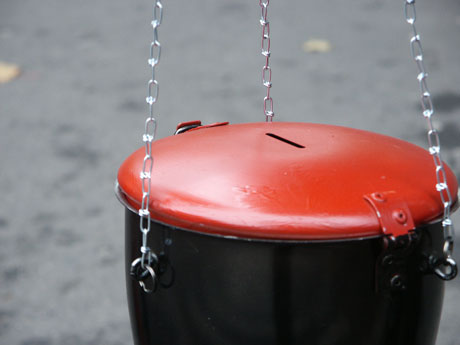
Salvation Army Captain Joseph McFee, who placed a kettle on a tripod at the San Francisco port back in 1891 and started to collect food for hungry sailors, could not have guessed that his invention would become world famous – one of the best-known brands worldwide. As an innovation, the kettle has retained its strength, and this year again, innumerable Christmas kettles across the world will bring Christmas joy to those who live in poverty. This proves how a small individual action can have far-reaching consequences.
Christmas Kettles came to Finland in 1906 and the Salvation Army’s kettle collection has provided joy to Finnish homes ever since. In 1998, traditional outdoor kettles were complemented with a website raising funds online. This year activities expand again when unmanned kettles are placed in K-citymarkets and VR State Railways’ ticket offices across Finland.
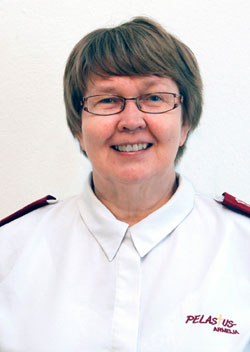
Eija Kornilow
Help from the Finns
The Christmas Kettle collection has been well received by the Finns and so we can help thousands of people with food vouchers, mental support, advice and other activities that provide support in their daily lives. Last Christmas we helped 7,600 households. Collection proceeds also enable us to continue providing support long after Christmas, which means that the total number of beneficiaries will be much larger. Donations also help us organize various camps and events for children and families throughout the year.
Bearing responsibility together
Our cooperation with Kesko started last year. The kettles in K-stores and K-citymarkets collect aid to low-income people also this Christmas. Our partners provide us with important support in this work.
The Salvation Army has a Christian background; we carry other people’s burdens and help those in distress. We all belong to one family of humanity and are responsible for each other. Together we can do more than alone; therefore we are grateful to our every donor and partner.
Our world needs new innovations to spread the good. Anyone of us can be a new Joseph McFee who discovers a new way of doing good and helping one’s neighbours. Let your imagination fly and consider what you could do. The good you do to others is good you do yourself. Helping will give you strength and joy. It will leave an unforgettable imprint.
Merry Christmas!
Eija Kornilow
Head for Communications
Finnish Salvation Army
Responsibility reporting is part of company’s everyday activities
Corporate responsibility, social responsibility or sustainability - a dear child has many names. Corporate responsibility and the related objective of transparency has become an established part of large and medium-sized companies’ business. A corporate responsibility report is one of the most significant means of describing the impacts of a company on the environment, society, economy and increasing transparency in the company’s administration.
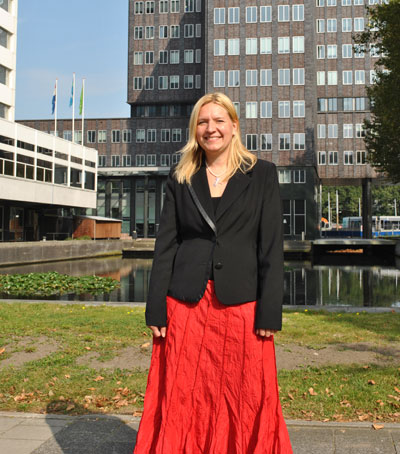
Reporting provides companies and their stakeholders, such as investors and consumers, with information about the positive and negative environmental and social impacts. Reporting, collecting data and figures is, however, not sufficient. It’s important what figures and information the company publishes, what themes its responsibility report covers and how it describes its challenges and even failures. Transparency and concrete actions to mitigate negative impacts are an essential part of high quality reporting.
Corporate responsibility reporting is a process whose value is much higher than the annual publication of a report. The reporting process provides the company with valuable information about where its challenges and opportunities lie and what to pay attention to from the viewpoint of risk management. Significant information includes, for example, the risk of child or forced labour or other human rights issues in the company’s operations or subcontractor chain.
Information collected during the reporting process also provides precious data to the company management and board of directors, and a smart company embeds responsibility in the purchasing chain, strategic planning, remuneration systems, and board discussions.
Global Reporting Initiative publishes the responsibility reporting guidelines which are the most widely used across the world. The new G4 version of the guidelines places an emphasis on defining the major impacts of operations together with stakeholders and reporting on them. The guidelines also include reporting on the impacts of the subcontractor chain, which may be challenging but very material when studying the social and environmental impacts of retail trade, for example. Since 1997, GRI has also provided indicators for climate change and greenhouse emissions.
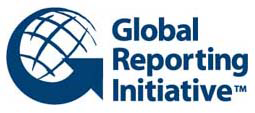
The author Tuulia Syvänen is Chief of Staff at Global Reporting Initiative GRI. Further information available at www.globalreporting.org .
Kesko’s Corporate Responsibility Report has been prepared in line with the G4 guidelines.
The Rehabilitation Foundation and Kesko are implementing a joint project for supporting working ability and learning at the beginning of career. One of its aims is to identify learning difficulties and increase awareness of them.
The project ran a questionnaire among young employees. Its results show that learning difficulties are more common than usual in the trading sector and warehouse work. The most common learning difficulty is dyslexia.
For many young people, the trading sector and warehouse work provide jobs that enable learning at work. Compared with school, working life offers better possibilities to exploit one’s own strengths, which, in case of dyslexia, include big-picture thinking, good manual skills, diligence at work and good social skills. It is also argued that there are lots of dyslexics among entrepreneurs.
Learning difficulties and the ways in which people tackle them are often different between different individuals. For Finnish dyslexic adults, foreign language skills are the biggest problem. They read slowly and especially men can have difficulties in writing. Problems of memory and concentration are also common. Some Finnish adults have problems with basic reading. Sometimes the reason for an employee’s reluctance to participate in training or to take on assignments involving reading and writing is a learning difficulty.
More often than not, learning difficulties are not disclosed at the workplace or to the supervisor, because they are not thought to affect work performance, or employees prefer to hide them. Moreover, there are lots of young people and adults whose learning difficulties have not been identified at school.
The project workshops have discussed how learning difficulties are taken into account in working life. Paying attention to youths’ working ability provides a basis for the whole of their careers.
It is important to take learning difficulties into account in communications and apprenticeship arrangements. The Occupational Health Care Service can arrange a private discussion on learning difficulties and their possible effects on work performance. Training and career alternatives and the promotion of working ability and learning can be discussed in performance and development reviews. It would also be useful to think about the core content of our work.

Kesko has paid good attention to the induction of new employees and discussions about matters related to working ability. In this project, these matters are discussed with regard to learning difficulties. Does the employee have the possibility to repeat training? Are instructions clear? How can learning difficulties affect the ability to work?
In a good working community, employees can make use of their own strengths. A tolerant atmosphere, seeing details as part of the big picture and learning one new thing at a time over a longer period of time will make learning easier. Paying attention to problematic areas in communication and learning and the career as a whole will benefit all employees.
The writer Johanna Korkeamäki is a researcher at the Rehabilitation Foundation.
The project for supporting working ability and learning at the beginning of career is run from 2013 through 2015. The main financier is the Finnish Work Environment Fund.
Towards integrated reporting
Integrated reporting has been widely discussed recently. It gives companies new opportunities to develop corporate reporting. The aim is to provide a better overall picture of the company’s ability to create value and combine all information that is material in this respect.
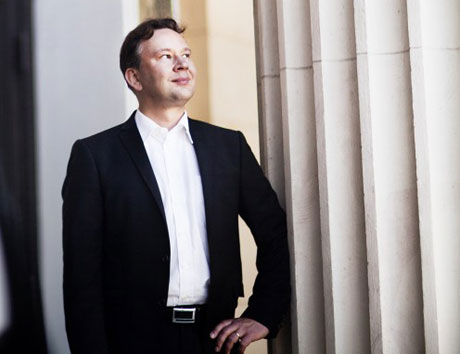
Companies have drawn up a great number of different reports in recent years and their complexity and extent have increased continuously. The aim of integrated reporting is to sum up the material elements and reduce the amount of fragmented data. It does not, however, eliminate compulsory reporting but links together the most important data from various types of reporting.
Reporting has traditionally presented a review of the company’s past operations whereas integrated reporting also keeps an eye on the future. The aim is to help investors, in particular, but also other stakeholders to form a better overall picture of the company’s operations and its ability to create value at different time spans as well as of the factors contributing to value creation.
Compared to the current practice, integrated reporting provides a more exacting description of the company’s business model, strategy, earnings logic, risks, objectives and progress realized in relation to its ability to create value. In addition to financial data, information is also needed about immaterial factors and the impact of corporate responsibility on business. The starting point for all this is integrated thinking in operating practices, management and business.
Globally, integrated reporting is just taking the first steps. The new model has been developed as a multinational project by the International Integrated Reporting Council (IIRC). Last December, the IIRC published the <IR> Framework, which presents the fundamental concepts of integrated reporting and assists with the implementation.
The starting point of the <IR> Framework is to observe the factors that affect value creation in a ‘big picture’. The company creates value through its operations, but factors contributing to value creation also include the financial, social, technical and environmental circumstances in the company’s operating environment, its interaction and cooperation with customers, employees, suppliers, local communities and business partners as well as the availability, price, quality and management of various resources. These factors are summed up in the company’s business model and its description. The <IR> framework enables the company to seize and sum up the complex value creation process with all the factors involved.
Mikael Niskala is a corporate responsibility professional and Senior Adviser at Mitopro Oy.
An ecosystem of different people
The Crowded Years InitiativeTM of Attorneys at Law Borenius; the telecommunications company DNA’s open-plan office model; Kesko’s projects Many Kinds of Performers and Let’s Talk about Work; Lassila & Tikanoja’s multicultural working community application; and the Family Federation of Finland’s advocacy of family-friendly workplaces are concrete examples of the Diversity Charter Finland’s encouraging initiatives. The charter launched by FIBS in 2012 currently includes 35 forerunner operators, which employ hundreds of thousands of people and the growth continues.

In Finland, we have traditionally thought that we are a very homogeneous nation with same kind of services selling well from the south to the east of the country. This idea has been challenged by changes resulting from the emergence of different generations of consumers on one hand and the different services demanded by foreign customer groups on the other.
In recent years, to the annoyance of biologists, the mobile business has adopted their traditional concept of ecosystem when referring to a community of different actors in which new, innovative combination of components takes place. The basic notion of a flourishing ecosystem is diversity, in which diversity generates new energy. In fact, this was also called for in the negotiations for a new Finnish government, in other words, boosting economic growth by doing things in new and better ways.

Businesses too should recognise that there are huge numbers of different people and needs among buyers as well as sellers. The diversity of the business world is a fundamental element in corporate responsibility and it is acknowledged by many of the forerunner companies. The Sustainability in Finland 2014 survey by Corporate Responsibility Network FIBS interviewed 200 business leaders, and its results revealed that labour practices and diversity management have become the third most important CR theme.
Diversity management aims for companies to employ sufficiently different people, including the composition of the top management. This has been seen to improve the efficiency, atmosphere and productivity of the company. Equal opportunities for career progress generate an enormous amount of positive energy at every level. In practice, this means recruitment, management path planning, flexible working hours, providing employment for the young and age conscious management. The most immediate benefits are seen in customer work when, for example, employees with language and cultural skills are used in customer service.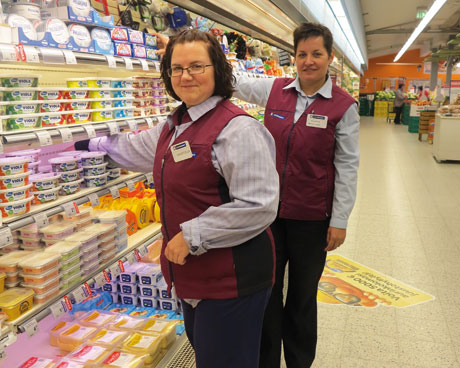
Even today in Finland, there are shortages of employees and competent personnel while at the same time, not all qualified people are given the opportunity to advance to appropriate positions on the grounds of gender or some other reason. The EU also promotes non-discrimination with the help of gender quotas and reporting on personnel diversity. The Finnish Non-Discrimination Act obviously has the same objective.
We have seen that many companies and industries themselves have succeeded in improving their internal atmosphere and external reputation by means of good diversity management. It is more sustainable than compliance with directives. Retailing, an industry that encounters consumers on a day-to-day basis, has taken part in various projects and pilots.
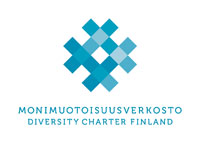
The Diversity Charter Finland, launched by FIBS in 2012, currently includes 35 forerunner operators which employ hundreds of thousands of people and the growth continues. The willingness to change things is manifested externally in the Charter signed by the managing director, which shows that the management takes the matter seriously. The Charter signatories take part in the Working Life 2020 project aimed to raise the quality of Finnish working life to be the best in Europe by 2020.
Doesn’t this sound worth joining?
Further information: http://www.fibsry.fi/fi/english/themes/diversity-charter-finland
The writer, Mikko Routti, is the Executive Director of Corporate Responsibility Network FIBS.
Persistence and the Sanssi card helped me to get a job
I am a 20-year-old young man from Espoo and work at Ruoholahti Intersport in Helsinki. After passing the matriculation examination in 2013, I completed military service of six months. I plan to begin my vocational studies in the next few years, but I’m not yet completely sure of the field.
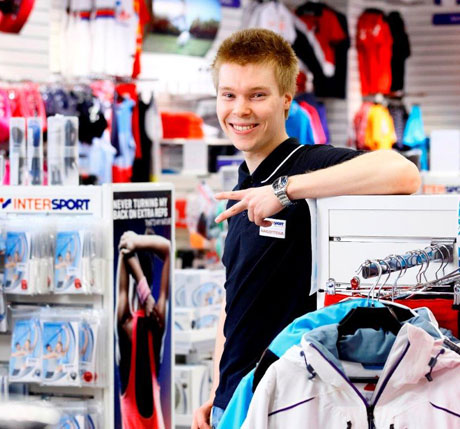
As I was unemployed for five months only, the period mainly felt relaxing and liberating after the hard work at school and the military service. I visited the Employment and Economic Development Centre a few times during these months, but got no actual support from there.
When I started looking for a job, my main wish was to find something to do with sports. Still, my search covered many sectors of retailing: I applied for nearly 20 different jobs before succeeding. I didn’t lose heart, however, but continued with an optimistic mind.
I was given a Sanssi card, which proved useful at an interview for this job at Intersport Ruoholahti. The outcome was a sudden and pleasant surprise. I had emailed my CV to some employers just the day before and now I was asked to come for a job interview. I agreed to come the following week and felt really excited.
At the interview I was naturally a little nervous and so perhaps not quite myself. The interview was relatively short, but I think the questions were all relevant, about my background and the duties of a shop assistant, for example.
Now I work part time and for a trial period of four months. My duties include sales, customer service and goods handling. I feel that the job is exactly right for me - I’m service-oriented and the atmosphere in the store is great. Every day there is motivating, thanks to customers and my workmates.
Working for Intersport is close to my heart, as I’m keen on various sports. I do this much out of interest, not out of necessity. Finding the right products for customers makes me as happy as them.
Now I want to work, which means that I’m putting off my study plans a bit.
What I want to say to other young people is that it pays to just be yourself and keep trying, even if you may not find a suitable job right away. However, energy and a certain type of modesty are qualities that help when looking for a job, as an ability to adapt to different duties is important at many workplaces.
For myself, scanty work experience was no obstacle to getting an interesting job; I believe that my positive attitude and that I really wanted to have this job were decisive.
Writer Joni Yliviitala works for Intersport Ruoholahti in Helsinki.
Americans buy American products – how about Finns?
The United States have a long tradition of ‘Buy American’ thinking. As part of its huge New Deal revival package in the 1930’s, the Roosevelt government launched a ’Buy American’ programme in 1933 to guide public purchasing. The programme is still in effect today and it has since been complemented with other programmes favouring domestic products.

The ‘Buy American’ thinking is going strong again. Walmart, the biggest retailer chain in the world, announced in January 2014 that it will increase its purchases of products manufactured or grown in the United States by $50 billion. This summer, Walmart collected more than 1,000 significant supplier companies to discuss the implementation.
A factor behind the phenomenon is the remigration of industrial production into the United States. The neo-industrialisation is supported by the diminishing difference in labour and logistics costs between the U.S.A. and Asia and the significant decrease in the price of energy in the U.S.A. internal market. The development also owes much to the determined work done both at the federal and state levels in order to make the transport infrastructure more efficient and to attract domestic and foreign industry investments back into the United States, among other things.
However, the most important factor behind the ‘Buy American’ phenomenon is the support of the people, consumers’ will to support employment in the United States.
According to attitude surveys, consumers’ will to support employment and favour domestic products is even higher in Finland than in the United States.
According to new surveys commissioned by the Association for Finnish Work, 90% of Finns want to know the origin of the products they buy. As many as 82% think that the companies whose products they buy should be socially responsible. In addition, 75% considers it a responsible deed to favour products and services that are produced in Finland. People are willing to favour Finnish products and services because those are associated with quality, responsibility and support to employment.
Now we should make it easy for consumers to put these attitudes in practice and thus support employment in Finland. This mission was realised as the Blue and White Footprint campaign that was launched in December 2013.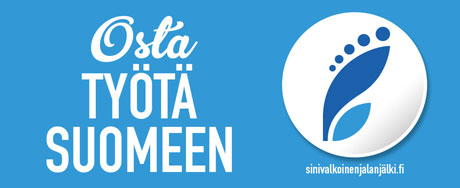
The Blue and White Footprint campaign is a joint effort to promote Finnish work by the Association for Finnish Work, the K-Group stores (K-citymarket, K-supermarket, K-market, K-extra, Anttila and Kodin1), the Finnish food industry and the Finnish home and speciality goods industry.
The campaign runs through 2014 and reminds consumers that their consumption choices do make a difference. The campaign also brings together local suppliers and a wide array of organisations such as the Central Union of Agricultural Producers and Forest Owners (MTK), Finfood – Finnish Food Information, the Finnish Horticultural Products Society and the Finnish Food Workers Union SEL.
Further information: www.sinivalkoinenjalanjälki.fi.
Tero Lausala is the CEO of the Association for Finnish Work.
Nutrition recommendations – for whom and why?
The updated nutrition recommendations were published in January 2014. The previous recommendations were from 2005, so it was indeed time to update the recommendations based on new research data. The main work was done by a Nordic expert group that organised a careful review of latest scientific evidence by some 150 experts. The assessment of scientific evidence was based on international criteria. The Nordic recommendations, on which the Finnish recommendations are based, were published in late 2013.
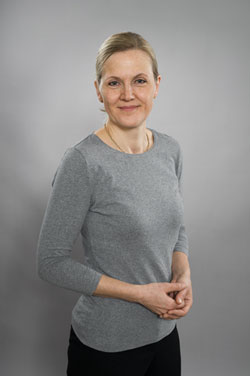
The nutrition recommendations are meant for healthy people who do a moderate amount of exercise, and their key target is to enhance public health and prevent diet-related diseases such as type 2 diabetes, cardiovascular diseases and obesity.
They also form the base for operations in health care, although they are not health care recommendations. For example, people with decreased bone density (osteoporosis) need more vitamin D and calcium than a healthy person, but in other respects, the nutrition recommendations suit them well.
As for individual vitamins and minerals, the nutrition recommendations provide a long-term target, so there is no need to worry if your diet is exceptional on some days or, say, on a holiday trip. Fortunately, our body is not that sensitive!
One target of the nutrition recommendations is to estimate the dietary intake of the population. For example, the results of the Finravinto 2012 study published at the turn of the year are compared to the recommendations. The comparison shows that we get too much salt and saturated fat, and also our sugar intake is on the upper limit of the recommendation. In contrast, we get too little dietary fibre, unsaturated fat and folate, a vitamin in the B group. Our diet also includes too little vegetables, berries and fruit.
Another target of the nutrition recommendations is to guide decisions on health policies. At the beginning of the 21st century, it was recognised that the vitamin D intake of Finns was inadequate with respect to the recommendations. As a consequence, a decision was made to add vitamin D in milk products. This improved Finns’ vitamin D intake, but not yet enough. Therefore, the amount of vitamin D in milk products and margarines was increased. Currently, Finns’ average vitamin D intake is adequate.
The food pyramid provides guidelines for compiling a diet – generously from the bottom and seldom from the top.

The plate model provides guidelines for a single meal. Bon appetit!
Read more: http://www.ravitsemusneuvottelukunta.fi/portal/en/nutrition+recommendations/
Ursula Schwab
Adjunct professor of nutrition therapy, University of Eastern Finland Kuopio Campus
Member of the expert group for the Nordic and Finnish nutrition recommendations.
Youth guarantee works in the K-Group
There have been claims in the public discussion that the youth guarantee entered in the government platform is not happening in practice. It seems that there are more critics than unemployed job applicants. But as we know, a positive and open-minded attitude and team spirit are keys to change and a good end result. The K-Group has been like the leader in a wedge of cranes, showing sceptics that the youth guarantee and employing young people do work in practice.
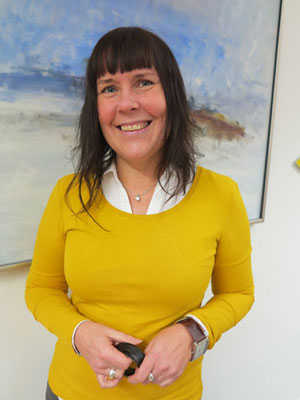
The K-Group officially started its own youth guarantee programme in August 2013. The summer was spent in creating info kits, establishing contacts and getting started to spread the youth guarantee message in high spirits. Loopholes were addressed immediately as they were recognised.
From August to March, more than 900 young people found their way into the K-Group through the youth guarantee. The total number of people under 30 years of age employed by the K-Group in August to December 2013 was some 3,600. Success has required continuous development not only in our operations but also in the operations of our partners. Honesty and open discussion have made it possible for the programme to go on and be successful.
Employment under the youth guarantee requires three parties: the coordinator, the retailer, and the contact at the TE Office. Three parties dedicated to help the job seeker. All parties support each other. Everyone does their own part well, and no one is left alone. Information sharing and bureaucracy have to be smooth and quick, because there is work waiting to be done.
We have established dedicated contacts in the TE Office for the K-Group to help employers find the best young person for the job. The same officer also supports in the pay subsidy process, among other things, to make sure the employment starts at the time agreed on.
Centralised operations for the youth guarantee have been created also within the K-Group. The coordinator collaborates with external and internal parties, acting as glue to connect the various parties and sharing information.
What matters is a successful outcome. Someone is found to do the work and a young person gets a chance to enter working life. Now many other companies and parties want to find out how to reach the goal and how we have achieved it in the K-Group.
The writer Johanna Kinnunen is project coordinator in the K-Group youth guarantee programme.
Store full of tales
Some time ago, I met Adrien Kouadion, a cocoa farmer living in Ivory Coast. He is quite a delightful person, a passionate football player who wanted to become a farmer like his father. It was love at first sight when he met his wife; he constantly delights his community through his positive attitude and enjoys time with his family. Via YouTube, you and thousands of others have a chance to meet Adrien and let his sparkling good humour and contagious smile cheer you up.

Through centuries and cultures, tales have been an essential way of transmitting knowledge and an important learning device. Tales have been used for warning, guidance, protection and development. Tales go on and are transmitted from one generation to the next, and they transform just as appropriate at a given time. Tales also connect us to the society and culture. Tales help us get to know ourselves and our environment better. Tales often have a touch of something magical.
Responsibility is and will increasingly be tales. Through tales, responsibility and companies’ responsible actions become concrete. Tales add credibility. We are painfully aware that policies and great speeches about responsibility were unable to prevent the Rana Plaza accident or the modern slavery created by low wages and excessively long working hours. Consumers have awoken to the discrepancy between words and actions and have started to ask why big companies do not know where their products come from, who makes them and what the reality looks like along the products’ path. Declarations, speeches and hundreds of responsibility labels that people cannot really tell apart are not enough anymore. We need true tales from the real world.

A tale adds meat on the bones of a product’s long journey. It tells consumers what indirect benefits they can bring about by buying a certain product. A tale puts a face on a product and also acts as a small guarantee of responsibility. Tales also present an excellent opportunity to enhance brands and do brand marketing. In the near future, stores may put up small interactive screens or signs with tales from the journey of responsibly produced products.
I want to be part of a tale, of something bigger than myself. I am happy to buy chocolate made of Adrien’s cocoa; lamps from Jukka’s factory where people with disabilities are encouraged to work; meat from Kalle, whose organic farm our family visits to see young calves; and apple sauce direct from Grandma. I could fit in many more stories in my life; I hope stores can fit them in, too. So, I wish for a store full of tales! On a small scale, it is already realised in the small shops of rural areas, but the challenge is to incorporate tales in a global delivery chain. I encourage the trading sector to take action and satisfy customers’ hunger for stories!
The writer Minna-Maari Harmaala is Principal Lecturer of Corporate Responsibility at Haaga-Helia University of Applied Sciences.
Where to send used clothing – for recycling or incineration?
In Finland, there is a discussion about what to do with textiles and clothing that are no longer used. EU will also take up the issue when it starts reassessing waste legislation in the course of next year, and the focus will probably be on textile waste again.

But why do we talk about waste; could clothes or even material be used again?
The legislator is interested in setting up an efficient collection system. Before collection there should, however, be an understanding of how to use textile fibre waste sustainably and profitably, too, as it is profitability that makes recycling a sustainable activity.
Consumers buying clothes are probably interested in the issue, as they would pay for the costs of separate collection in the prices of clothing. Clothes buyers are very price sensitive and not willing to pay very much for recycling.
Utilisation of textile waste and its raw material, fibres, is an issue which presents many problems. Reusability of different textile fibres varies considerably and mixtures are even more problematic. It has been said that the recycling of cotton and polyester are as close each other as the recycling of frying-pans and soda bottles.
 After just over two years, textile waste can no longer be taken to landfills. Is there any other use for textile waste but incineration to energy with other waste? Recovery of energy through incineration is tempting because when incinerated, a kilo of clothing generates more energy than a kilo of wood!
After just over two years, textile waste can no longer be taken to landfills. Is there any other use for textile waste but incineration to energy with other waste? Recovery of energy through incineration is tempting because when incinerated, a kilo of clothing generates more energy than a kilo of wood!
Some companies make profitable business with textile and fibre waste. However, in order to make separate textile waste collection profitable or even sensible, we should be able to use nearly all of such waste.
Methods for using textile waste are being constantly developed. Melt spinning of used synthetic fibres presents some problems as does the mechanical recyclability of natural fibres. On a large scale, the quality and price of recycled textile fibre are unrealistic in most cases and their environmental impact is greater than that of new fibres. In many cases, the recycling and recovery of fibres is impossible.
The use of textile waste must be based on the most cost-efficient method and absolutely be market-based as a whole. Why make consumers pay for something that would only harm the environment? Why pile up a growing mountain of textile waste that could not be made use of?
It is expected that the increasing price of oil, the growth in demand for clothing in Asia and higher prices of fibre will increase the demand for textile waste as raw material. In the meantime, clothes first warm people wearing them and can later be incinerated with mixed waste to generate heat.
The writer Veli-Matti Kankaanpää is CEO for Textile and Fashion Suppliers and Retailers Finland.